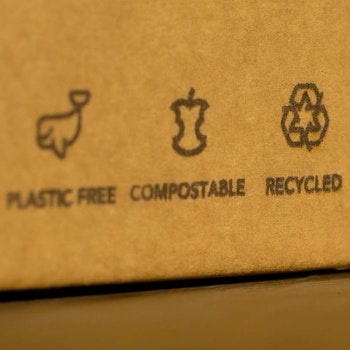
In our last newsletter we invited readers to submit questions to our CloudArmy advisor, Dr Michael E Smith, author of ‘Inspiring Green Consumer Choices: Leverage neuroscience to reshape marketplace behavior (2021, Kogan-Page, London). Below are a selection of answers to questions relevant to making brands more sustainable.
Q: What is the key to marketing sustainability or ESG initiatives from a behavioral / neuroscientific perspective?
MS: The one key thing that emerges from both the behavioral science and neuroscience literatures is that if you want someone to pursue a particular path of action, you need to architect the environment in way that makes that path the easiest to pursue out of the options that are available. That is, as either a marketer or someone focused on changing organizational behavior, you need to fashion a set of circumstances that removes barriers that could prevent someone from engaging in a desired behavior, while also increasing their perceived rewards if they select that target path.
Q: So, we often speak of the intention-action gap; what methods are available to assess and nudge people in a way that a) lessens this gap, and b) tug at their heartstrings enough to spark action?
MS: A first order of business for trying to address this question is to try to understand the size of the sustainable behavior intention-action, and how that size might differ between different consumer segments. For example, when asked most people will espouse some intention to try to behave more sustainably and/or in a way that promotes social justice. A subset of those people might indeed act on their intentions on a consistent basis, whereas most, for a variety of reasons, are less consistent in this regard. And on the other end of the spectrum are a minority that reject having such intentions and probably live accordingly. A number of recent studies have employed speeded reaction time methods to gauge agreement with statements related to such intentions, and have succeeded in segmenting the population by identifying subgroups that are confident in having such intentions and acting upon them, another that has such intentions but is less confident about how likely they are to act upon them, and a third group confident in their rejection of such intentions. Once you’ve identified such segments one can employ a variety of implicit and explicit methods to optimize interventions that might best appeal to each group. The first group might well respond to direct environmental or altruistic appeals. For the second group you might need to work harder to identify and remove barriers to action and to customize appeals in ways that make them more personally relevant rather than abstract and altruistic in nature. And, for the third group, an effective appeal might focus on price or performance benefits rather than environmental or social benefits.
Q: Given that you are published in the space, you might have an idea of trends, what are you seeing currently that is positive or what could be improved upon in the marketing of ESG or sustainable branding?

MS: I might be overly optimistic on this point, but I think in many sectors brands and organizations are becoming more concerned about the risk of reputational injury from perceptions of attempted green-washing or purpose-washing. And as a result of that they are sincerely trying to become more authentic in their marketing communications and business practices, and to be more circumspect with respect to their claims of environmental or social benefits. While there continues to be lots of bad actors out there – the fossil fuel industry comes to mind – on the whole I think that growing awareness of this issue is leading to more balanced and honest conversations in the marketplace.
Q: Which categories do you think are most important for creating a more sustainable economy? Which do you believe is the easiest to fix?
MS: That’s a big question so I’ll narrow it down to focus particularly on consumer behavior and the decisions that individuals can make to reduce their greenhouse gas emissions and other aspects of their environmental footprint. Organizations that have studied this question in depth generally identify a few areas that people, to some extent, have under their personal control and where behavior change can be impactful. Probably the biggest buckets include choices related to transportation options, household energy use and efficiency, and diet. Individual consumer choices in each of these areas can have a big impact, and don’t always have to reflect trade-offs with issues such as relative costs or overall quality of life. And in each area companies and policy makers have a role to play in helping guide consumers to make choices that are compatible with the emergence of a more sustainable economy.
Q: How can companies leverage neuroscience-based research and methods in order to re-orient their business processes, making them more sustainable or environmentally friendly?
MS: From an operational perspective, companies looking to improve the sustainability footprint of their operations typically try to align the interests of three sets of stakeholders: their employees, their suppliers, and their customers. And a key part of those efforts often requires improved understanding of the attitudes, motivations, and opportunity to affect change among each of these groups. Since there can be big differences in power between stakeholders, and differences in their perceptions of associated risks and rewards, conventional attitude assessment tools such as survey instruments may fail to accurately identify implicit concerns and perceived obstacles to change. By combining explicit assessment tools with more implicit measures of either a behavioral or physiological nature, organizations might come to better understand stakeholder responses to various change initiatives and might be better enabled to craft operational frameworks that will succeed in engaging all concerned parties.
Q: What has been the reaction to your book, have people or companies been receptive to the approaches?
MS: Generally, reactions have been very positive. The approaches I cover in the book are very much aligned with the received wisdom in the behavior science literature, but I tend to dig a little deeper into the brain mechanisms that either underlie or sometimes undermine the success of behavior change interventions. Brand managers, organizational behavior professionals, and policy makers are all facing a growing societal imperative to improve the ESG profiles of their operations, and there seems to be a growing appreciation for the potential of insights and methods derived from the social, behavioral, and neural sciences to help facilitate such improvements.
Michael E. Smith, PhD is an advisor to CloudArmy and author of the book Inspiring Green Consumer Choices: Leverage neuroscience to reshape marketplace behavior (2021, Kogan-Page, London)






